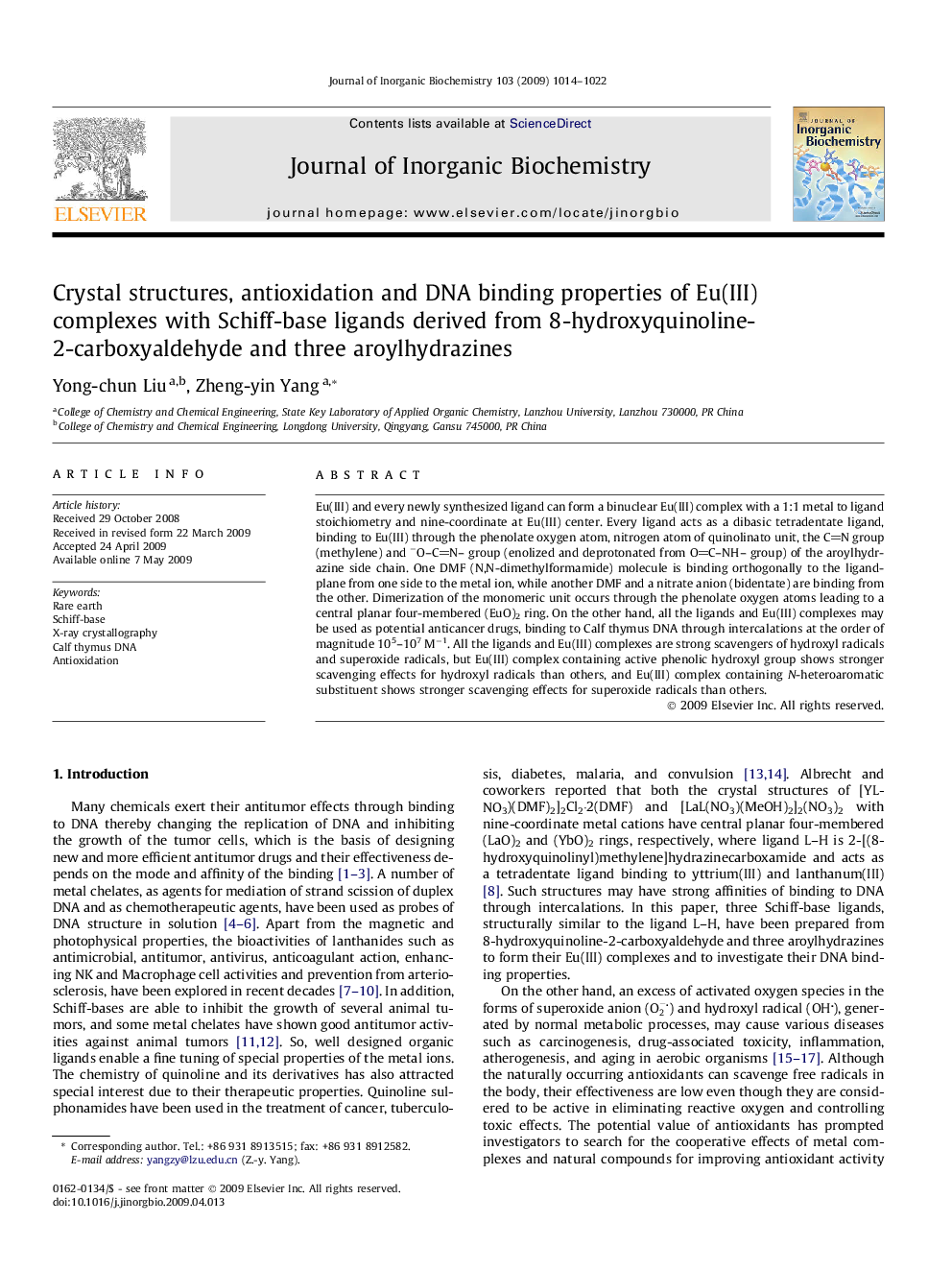| Article ID | Journal | Published Year | Pages | File Type |
|---|---|---|---|---|
| 1318031 | Journal of Inorganic Biochemistry | 2009 | 9 Pages |
Abstract
Eu(III) and every newly synthesized ligand can form a binuclear Eu(III) complex with a 1:1 metal to ligand stoichiometry and nine-coordinate at Eu(III) center. Every ligand acts as a dibasic tetradentate ligand, binding to Eu(III) through the phenolate oxygen atom, nitrogen atom of quinolinato unit, the CN group (methylene) and âO-CN- group (enolized and deprotonated from OC-NH- group) of the aroylhydrazine side chain. One DMF (N,N-dimethylformamide) molecule is binding orthogonally to the ligand-plane from one side to the metal ion, while another DMF and a nitrate anion (bidentate) are binding from the other. Dimerization of the monomeric unit occurs through the phenolate oxygen atoms leading to a central planar four-membered (EuO)2 ring. On the other hand, all the ligands and Eu(III) complexes may be used as potential anticancer drugs, binding to Calf thymus DNA through intercalations at the order of magnitude 105-107Â Mâ1. All the ligands and Eu(III) complexes are strong scavengers of hydroxyl radicals and superoxide radicals, but Eu(III) complex containing active phenolic hydroxyl group shows stronger scavenging effects for hydroxyl radicals than others, and Eu(III) complex containing N-heteroaromatic substituent shows stronger scavenging effects for superoxide radicals than others.
Related Topics
Physical Sciences and Engineering
Chemistry
Inorganic Chemistry
Authors
Yong-chun Liu, Zheng-yin Yang,
